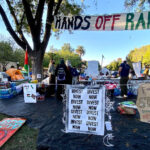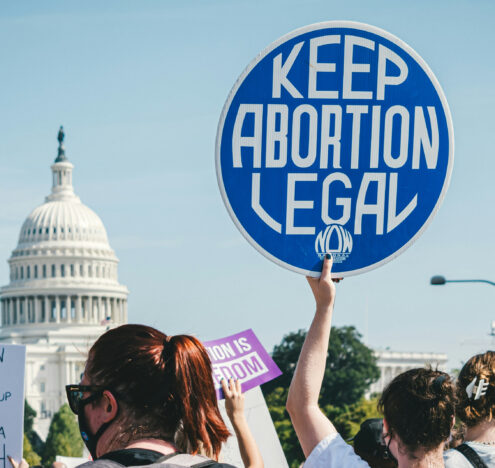Donald Rumsfeld was America’s worst defense secretary since the Vietnam War. From letting Osama bin Laden escape to cooking the intelligence books on Iraq, then presiding over that war’s disastrous prosecution, Rumsfeld’s fingerprints are all over some of the biggest blunders in the history of US foreign policy. Unafflicted by self-doubt, he won bureaucratic battles and bulldozed dissenters for the five years he directed the US military. But the late, occasionally lamented Pentagon chief got one thing right: NATO’s center of gravity has shifted from “Old Europe” to “New Europe.”
Rumsfeld dropped the two Europes jibe after France and Germany opposed Washington’s march to war in 2003, calling their position “a problem” and contrasting them with supportive, forward-looking new allies in Eastern Europe. Of course, the United States — and the world — would have been far better off had Rumsfeld and the rest of President George W. Bush’s team listened to the French and Germans and pulled back from a catastrophic war in Iraq.
The divisions within NATO didn’t disappear after Iraq. As Western relations with Russia worsened during the 2010s, the continent’s economic engines (France and Germany) sought a modus vivendi with Moscow while smaller post-communist states on NATO’s eastern front raised the alarm. Since the 2022 invasion of Ukraine, myriad shortfalls in Russian military capability and capacity have reinforced Old Europe’s sense of security, but Russia’s willingness to initiate a war has heightened the anxieties of New Europe — including Finland and Sweden, NATO’s newest applicants (the former already successfully).
After some initial alarm, Old Europe has returned to business as usual when it comes to defense. The return of industrial warfare in Ukraine has not led the French government to reconsider its preference for investing in quality over mass in land warfare. Though President Emmanuel Macron’s 2023 defense budget request raises spending from $48.1 billion to $49.7 billion, larger increases through 2030 will prioritize continued modernization instead of growing the armed forces to sustain large-scale combat operations.
In the wake of the Ukraine war, a viable European security architecture will have to acknowledge that there are nations making meaningful contributions to collective defense and nations that are not. But this raises an uncomfortable dilemma for Washington: the NATO members who take their defense obligations seriously are also the ones prone to advocate for escalation in Ukraine and to support maximalist war aims.
In Berlin, there are signs Chancellor Olaf Scholz’s much-hailed “zeitenwende” will amount to little more than a new transatlantic buzzword. The German government has conceded it will not reach NATO’s 2% spending guidelines until 2025 at the earliest. Over a year after Scholz created a special $109.5 billion fund to modernize the Bundeswehr, Berlin has not spent any money from the account to purchase new equipment. A leaked memo written by a top German defense official revealed that a division meant to contribute to NATO battlegroups “will not be able to hold its own in high-intensity combat” due to severe equipment shortages. The German armed forces reportedly only have enough ammunition for two days of fighting.
The alliance’s second-largest army is similarly uninterested in preparing for war with Russia. Excluded from Europe, both old and new, in 2003, Turkey rebuffed the Bush administration’s request to allow US forces to open a northern front into Iraqi Kurdistan. Today, unlike the rest of NATO, Turkey is still open for business with Russia. Rather than join the West’s economic blockade, Ankara has thrown Moscow a lifeline by increasing bilateral trade and opening a new natural gas hub for exports to Europe.
The reaction from New Europe could not be more different. NATO’s Eastern European members frequently raise the possibility they will be the next targets for the Russian army if it is not defeated in Ukraine. Mindful of their historical experience and geographic vulnerabilities, these former Soviet satellites and Cold War neutrals have, together with the United Kingdom, become NATO’s “new backbone,” according to House Armed Services Committee chairman Rep. Mike Rogers (R-Ala.).
Unlike Old Europe, the Eastern allies are putting substantial skin in the game. The Latvian parliament voted to reintroduce conscription earlier this year. Estonia never abandoned compulsory service, while Lithuania returned to the draft in 2015. Last year, all three Baltic nations exceeded NATO’s 2% defense spending target, joining the United States, United Kingdom, Poland, and Greece as the only members to reach the threshold.
The changes are most dramatic in Poland. The Poles will soon field one of the largest and most capable militaries in the West. Last fall, Warsaw ordered nearly 1,000 tanks, over 600 pieces of artillery, and 48 fighter jets just from South Korean defense firms. Two more deals struck with the United States will add more than 350 M1A1 Abrams main battle tanks to the Polish arsenal. Poland’s defense budget will equal 4% of GDP this year, proportionately higher than even US defense spending. A senior US military official recently labeled Warsaw “our most important partner in continental Europe.”
In the wake of the Ukraine war, a viable European security architecture will have to acknowledge that there are nations making meaningful contributions to collective defense and nations that are not. But this raises an uncomfortable dilemma for Washington: the NATO members who take their defense obligations seriously are also the ones prone to advocate for escalation in Ukraine and to support maximalist war aims. In contrast, Old Europe is more amenable to a political settlement; the United States may have to lean on France and Germany to support negotiations with Russia. Navigating these differences within NATO will be difficult but if history is any guide, Washington would be well advised to consider the perspective of Old Europe this time around, despite its security free-riding.





















